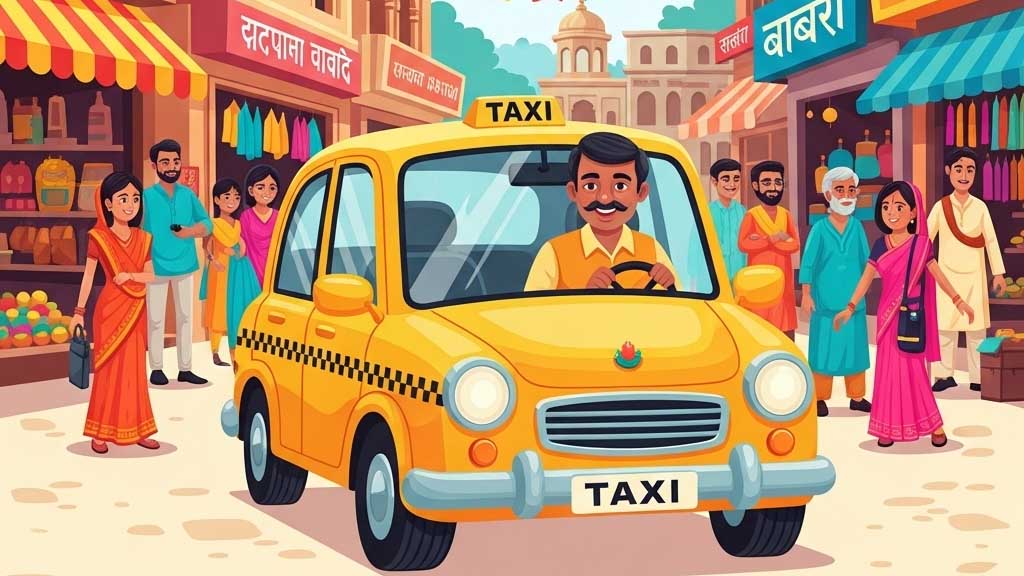India’s First Cooperative Taxi Service Takes Shape with Multi-State Registration
India is about to change the way it moves. Not with a new app, but with a movement. A movement rooted in ownership, fairness, and community. Sahakar Taxi Cooperative Limited, recently registered under the Multi-State Cooperative Societies Act, marks a turning point in how we think about public transport and worker empowerment.
I’ve spoken with gig workers and drivers who feel left behind by corporate ride-hailing giants. What Sahakar Taxi is building feels like the beginning of a system that puts them first.
Backed by India’s Largest Cooperative Powerhouses
The scale and backing of Sahakar Taxi are unlike anything seen before in India’s mobility space. It’s promoted by the National Cooperative Development Corporation (NCDC) and supported by seven of the most influential cooperative institutions in India:
- Amul (dairy cooperative giant)
- NAFED (National Agricultural Cooperative Marketing Federation)
- NABARD (National Bank for Agriculture and Rural Development)
- IFFCO (Indian Farmers Fertiliser Cooperative)
- KRIBHCO (Krishak Bharati Cooperative)
- NDDB (National Dairy Development Board)
- NCEL (National Cooperative Export Limited)
Together, these organizations bring decades of grassroots experience, financial muscle, and institutional trust to the table. They’re not just funding a taxi startup—they’re backing a people-powered revolution in transportation. Earlier NCDC Call for Technology Partners for Sahkar Taxi Project.
Multi-State Registration: A Strategic Step Toward Scalability
Sahakar Taxi is now officially registered under the Multi-State Cooperative Societies Act, allowing it to operate across multiple regions with legal clarity and scalability. Initially, the cooperative will serve Delhi, Uttar Pradesh, Gujarat, and Maharashtra, with plans to roll out services across India as operations mature.
This registration offers more than legality—it grants freedom to expand without state-by-state bureaucratic bottlenecks, something traditional cab aggregators struggle with when facing regulatory pushback.
A Model Built on Ownership, Not Exploitation
The heart of Sahakar Taxi’s vision lies in its structure. Unlike Uber or Ola, where drivers are treated as contract workers, here they will be equal stakeholders. Every driver will be a member of the cooperative, with voting rights, a share in the profits, and a say in how the platform operates.
That one structural difference changes everything. Drivers are no longer at the mercy of algorithmic price manipulation. They help shape the rules. And most importantly, they directly benefit from the revenue they generate.
This isn’t charity. It’s justice.
Funding and Financial Backbone
The cooperative has been set up with an authorized share capital of ₹300 crore. Out of this, ₹80 crore has already been committed by the eight promoting institutions. Each cooperative has pledged ₹10 crore, demonstrating their collective belief in the model’s viability and long-term impact.
This funding is more than capital—it’s symbolic of mutual trust between India’s rural institutions and its urban workforce.
As someone who’s tracked public-private partnerships in India, I rarely see this level of alignment between mission and money.
Leadership with Integrity and Sectoral Expertise
An interim board is already in place to guide the cooperative through its foundational phase. Rohit Gupta, Deputy Managing Director at NCDC, currently serves as Chairman. Other key board members include:
- V. Sridhar (NDDB)
- Tarun Handa (NAFED)
- Naveen Kumar (NABARD)
- Santosh Shukla (IFFCO)
- L.P. Godwin (KRIBHCO)
Their collective experience spans finance, agriculture, logistics, and grassroots organizing. This is a board built to understand India’s unique mix of urban chaos and cooperative potential.
Built for Scale: Technology in the Driver’s Seat
To rival private competitors, Sahakar Taxi must offer more than good intentions. It needs world-class technology—and it’s on that path.
The team is already working with leading tech institutions such as IIIT Bangalore to develop the digital backbone of the service. From driver onboarding, fare algorithms, customer service systems, to real-time tracking and digital payments, the goal is to build a platform that’s as efficient and user-friendly as any in the market.
But unlike corporate aggregators, Sahakar’s tech will serve drivers—not control them.
Vision Rooted in Policy: “Sahakar se Samriddhi”
The idea of Sahakar Taxi was first proposed by Union Home Minister and Minister of Cooperation, Amit Shah. His vision was clear—create a cooperative ride-hailing model that would bring under one platform not just taxis, but rickshaws, autos, bikes, and four-wheelers.
He stressed that the profits must flow to the drivers, not get extracted by venture capital or foreign tech firms. His words reflected a growing discontent with gig economy exploitation and a desire to anchor entrepreneurship in cooperative values.
The slogan “Sahakar se Samriddhi” (Prosperity through Cooperation) is not a tagline—it’s a blueprint. This model aims to improve driver incomes, create job security, and offer better service to consumers at lower costs.
Driver Onboarding and Rollout Timeline
The cooperative has started onboarding drivers in Gujarat and Maharashtra, states with strong cooperative networks and urban transport demand. Drivers will receive digital training, access to low-interest loans through cooperative credit societies, and assistance in vehicle registration.
The software infrastructure is under active development. Operational launch is expected in the next six months, starting with major cities and expanding outward based on demand and readiness.
Every step—from technical backend to driver training—is being designed with real-life usability in mind. This won’t be a rushed launch. It’ll be a careful build-up rooted in trust.
A New Chapter in Public Transport
India has seen countless tech-driven transport ventures. Most of them promised change. Few delivered it. What sets Sahakar Taxi apart is not just its cooperative foundation—but the deep institutional ecosystem backing it.
By bringing together agricultural cooperatives, financial cooperatives, and tech researchers under one banner, Sahakar is doing something no other ride-hailing service has even attempted. It’s decentralizing power, redistributing profits, and restoring dignity to the people who keep India moving.
I’ve spoken to drivers who’ve shared how unstable income and rising fuel costs are breaking their backs. For them, this isn’t just a job—it’s survival. And Sahakar Taxi could be the first sign of real relief.


Dear
sir
i am Raju kumar Das well lanch this job
Bijnor
dear sir
this self no whatsapp 7011376900
Dear
sir
sahkar taxi job 7011376900
all roud uber 6 years experness